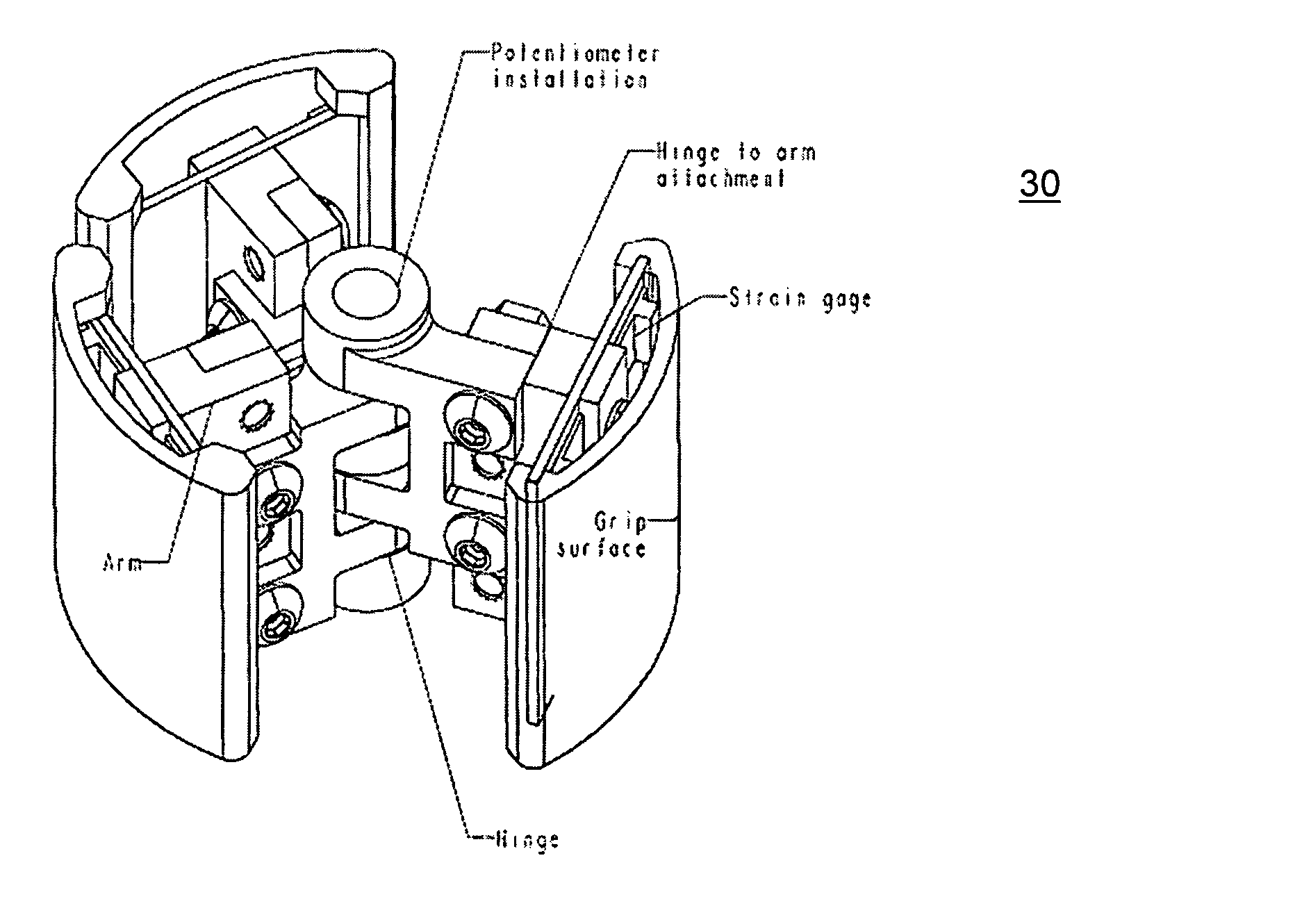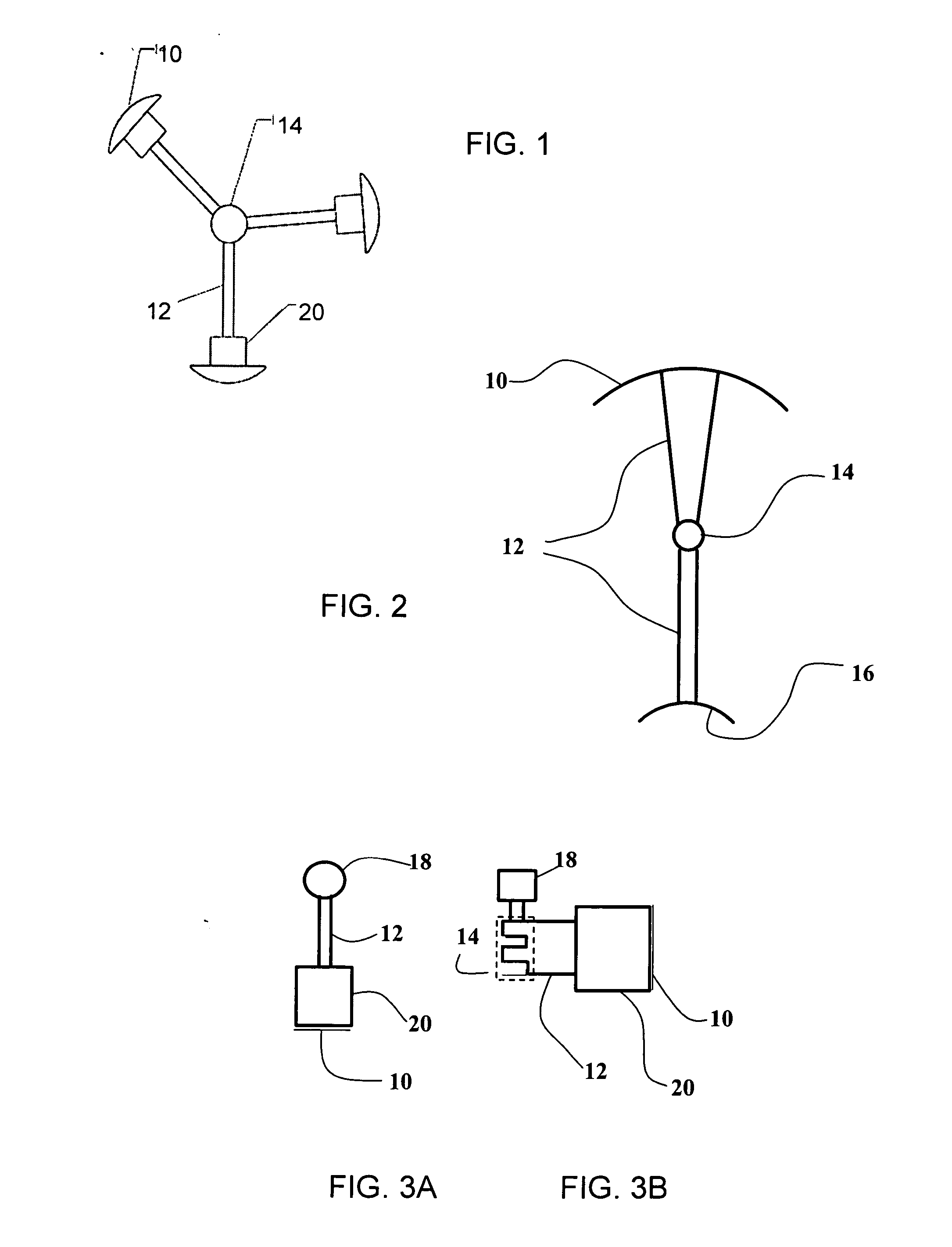Device and method for quantifying and extracting sensorimotor circuitry
a sensorimotor circuit and sensorimotor technology, applied in the field of devices and methods for quantifying and extracting sensorimotor circuits, can solve the problems that prior methods cannot conclusively describe the nature of finger motion and force regulation to maintain grasp stability, and achieve the effects of maintaining grasp stability, and facilitating understanding the neuromuscular
- Summary
- Abstract
- Description
- Claims
- Application Information
AI Technical Summary
Benefits of technology
Problems solved by technology
Method used
Image
Examples
Embodiment Construction
[0040] The basic features shared by all embodiments of the grasp measuring device are illustrated in FIG. 1. The device includes at least two finger pads 10 (3 or 4 preferred) for applying force through arms 12 to a common low friction pivot joint 14 (e.g. a hinge or a ball joint). The arms 12 are each free to move about the pivot joint 14. As a result, the forces applied by a user's fingers will be concentrated at the pivot joint 14 and will cause movement of the arms 12 about the pivot joint 14 unless equal and opposite forces are applied to the finger pads 10. In this manner, the forces applied by the user can be analyzed, used as input to a computer, etc.
[0041]FIG. 2 shows a variation of FIG. 1 wherein both a convex finger pad 10 and a concave finger pad 16 are employed. In addition, only two arms 12 are used in this variation. The common elements that are included in all embodiments include hand and / or finger actuated grasping pads, at least two arms and a common pivot joint t...
PUM
 Login to View More
Login to View More Abstract
Description
Claims
Application Information
 Login to View More
Login to View More - R&D
- Intellectual Property
- Life Sciences
- Materials
- Tech Scout
- Unparalleled Data Quality
- Higher Quality Content
- 60% Fewer Hallucinations
Browse by: Latest US Patents, China's latest patents, Technical Efficacy Thesaurus, Application Domain, Technology Topic, Popular Technical Reports.
© 2025 PatSnap. All rights reserved.Legal|Privacy policy|Modern Slavery Act Transparency Statement|Sitemap|About US| Contact US: help@patsnap.com



